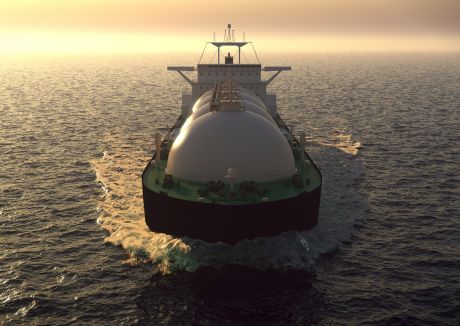Europe is increasingly turning to LNG imports as fears over Russian supply disruptions escalate. This is illustrated by the high utilisation rate of the EU’s regasification terminals which was above 75% this week, marking the highest usage rate for at least a decade, according to data published by Gas Infrastructure Europe (GIE).
The 21 LNG regasification terminals across the EU 27 nations recorded an aggregated utilisation rate of above 75% on Tuesday and Wednesday this week, according to data provided by GIE, the Brussels-based association for gas infrastructure operators.
The send-out rate on Tuesday was the highest since records began in 2012, GIE data shows. The aggregate utilisation rate of France’s four terminals, for example, was above 95% on Wednesday.
One industry observer told Gas Matters Today that Europe, including the UK and Turkey, was on track to receive more than 11 mt of LNG (14 Bcm) in April.
Europe imported about 1.5mt from Russia in April, mainly from Yamal LNG but also about 72,000 tonnes from Vytotsk. Yet most of the cargoes came from the US which has established itself as Europe’s leading supplier of the fuel.
LNG cargoes are also reportedly trading at a discount to TTF hub prices as supply is currently plentiful and access to slots at regas terminals is limited. Slack demand due to warmer weather is also pushing prices lower.
The glut of LNG is helping to boost storage levels which are now above 30% on average in the EU-27.
The high level of LNG imports will, at least to some extent, ease fears over disruptions to Russian gas supplies for the time being. Moscow cut off supplies to Poland and Bulgaria this week over the ‘failure’ of PGNiG and Bulgargaz to pay for volumes in rubles, Gazprom said.
European gas buyers are now scrambling to find ways to pay for Russian gas without breaching EU sanctions. The European Commission insists paying in rubles is a breach of sanctions as it will involve the Central Bank of Russia one way or another in the transaction process. However, it appears that some European energy companies are trying to find loopholes in the EC guidelines in order to pay in rubles to secure gas supplies.
One trading source speaking to Gas Matters Today noted that LNG imports in the UK were high and that storage levels were higher than normal. However, an unplanned outage at the interconnector linking the UK with Belgium is currently hindering UK gas exports to continental Europe. Gas Matters Today reached out to Fluxys, the IUK pipeline operator, for more information.
National Grid said in its summer outlook for the period April to September published earlier in April that this summer could see much higher flows to Europe than observed in previous years due to European strategic storage levels being low. National Grid said there was a high uncertainty concerning Russian gas supply and that Europe may have to rely on regasified LNG via GB terminals to refill storage. Gas to Europe is exported via the 19 Bcm/year BBL pipeline to the Netherlands and the 20 Bcm/year Interconnector with Belgium.
Meanwhile, several European countries including Italy, France and the UK are planning to add additional LNG import capacity by installing floating storage regasification units (FSRUs) over the next couple of years. According to GIE, current import capacity in the EU 27 is ~1920 TWh/year (196 Bcm/year) with another 200 TWh/year of additional capacity under construction and with the possibility of adding another ~1200 TWh/year by 2030.
EU countries imported a combined 80 Bcm of LNG in 2021, which was around 4 Bcm less than the year before despite a sharp rise in imports in Q4’21, according to the EC’s most recent gas report. The US was the EU’s main LNG supplier in 2021, a trend that looks set to continue, supplying around 22 Bcm, followed by Qatar and Russia which supplied around 16 Bcm each.
Photo: FSRU Independence (credit Klaipedos Nafta)
This material was first issued to subscribers of Gas Strategies Information Services (Gas Matters, LNG Business Review and Gas Matters Today). Much more than gas, Information Services covers a broad variety of topics across the global energy transition.
To find out more about how Gas Strategies can support your organisation with any of the points in this blog or regarding any aspect of the energy transition, then get in touch today.








